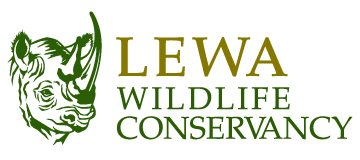Like many other migratory Palearctic bird species, the common redstart makes the cross-continental trip from Europe and Asia between February and May, often passing through parts of North-Western Kenya and northern Uganda.
The redstart, which was spotted on Lewa during this year’s migratory season, is a remarkably shy and silent bird with quick movements which makes it quite difficult to spot. It can go up to five years without being spotted.
 The Lewa-Borana Landscape provides an ideal stopover for many Eurasian birds with storks and rollers being among the more common ones. The Lewa avifauna research programme, which we set up in February this year, is providing us with invaluable information on the avian activity.
The Lewa-Borana Landscape provides an ideal stopover for many Eurasian birds with storks and rollers being among the more common ones. The Lewa avifauna research programme, which we set up in February this year, is providing us with invaluable information on the avian activity.
Scaling our avifauna research
This new exciting field of research on Lewa is spearheaded by Eunice Kamau, a 24-year-old scientist with experience in avifauna research, having led several bird expeditions in other conservation areas.
“In the past, we’ve estimated that this landscape is home to 400 species of birds, while often providing a suitable home for migratory species such as the common redstart. However, since I started collecting data in February, my preliminary inventory indicates we have significantly more than that, close to 500 species. We still have to get it verified, but the findings are very exciting.”

Grey-crowned cranes on Lewa. Photo: Dan Watts
Until recently, we’ve relied on annual expeditions with partners such as the National Museums of Kenya to identify changes in our avifauna. However, this was only providing us with a snapshot, which was not sufficient in understanding trends in bird populations.
Eunice explains the next step in this research programme:
“We’re now working with partners such as National Museums to identify indicator species as well as protocols to monitor migratory birds. We’re extremely excited that we’ve found a few rare birds that would have considered out of range in the past, such as the Snowy-headed robin chat, whose region of occurrence was originally thought to be limited to the western forests of Kenya. A comprehensive updated bird list for the Lewa-Borana Landscape will be presented at the end of 2019.
The programme is enabling us to understand our bird species better. If the birds are endangered, such as the Grey-crowned crane or Rüppell’s griffon vulture, we want to be able to know what role Lewa-Borana plays in the life cycles of these birds. And most importantly, what we can do to help conserve them, such as protecting their breeding areas.”







